Ferns are classically thought of as shade-loving plants that grow naturally in woodland and other sheltered spots, but that doesn’t mean that they can only be grown in the shady corners of your garden.
Some ferns grow well in direct sun, and many more can tolerate partial sun during the morning or afternoon. Even if they prefer the dappled light beneath overhanging trees, ferns can thrive in more open, sunny spots if the environmental conditions are right.
Despite that general principle, the different species of fern vary significantly in their tolerance of sun, with some desert varieties being ideally suited to a full blaze, but more delicate ornamental varieties being too sensitive for anywhere other than a shady, protected nook. To find the right match of fern to light levels, you also need to consider several issues to do with climate, moisture, soil conditions and space. But – first things first – which ferns thrive in sunshine, and which should absolutely not be planted in the full glory of the sun’s rays?
Best ferns for sun
Several varieties of fern are well adapted for direct sunlight, with the lip ferns (Cheilanthes spp.) in particular thriving in full sun. Here are six of the best options for sunny spots:
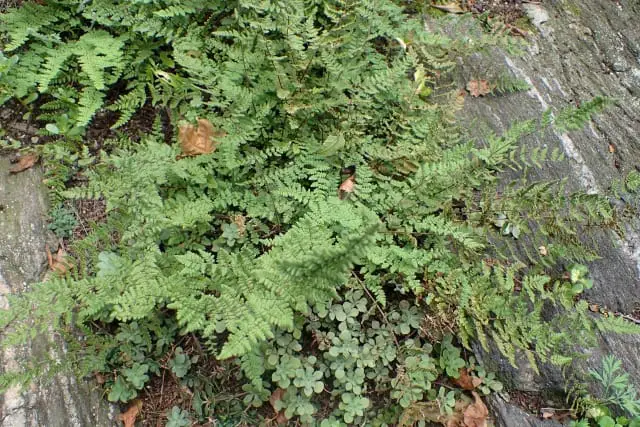
Hairy lip fern
- Cheilanthes lanosa
- Evergreen
- Full sun
- Height: up to 0.5 m
- Soil: acid, neutral or alkaline. Moist, well-drained.
Image credit: Krzysztof Ziarnek

Woolly lip fern
- Cheilanthes tomentosa
- Evergreen
- Full sun
- Height: up to 0.5 m
- Soil: acid or neutral. Moist, well-drained.
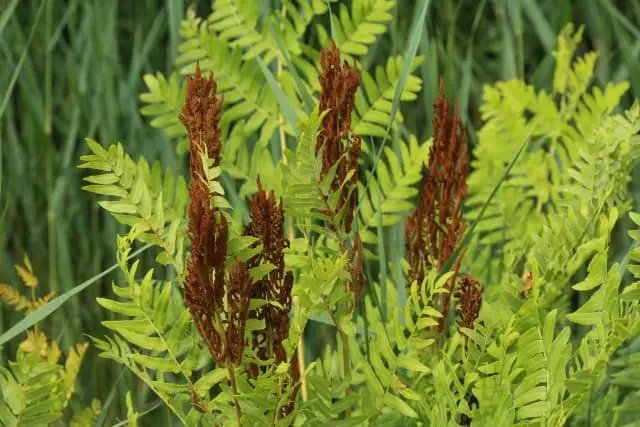
Royal fern
- Osmunda regalis
- Deciduous
- Full or partial shade, and full sun
- Height: up to 2.5 m
- Soil: acid, neutral or alkaline. Moist, poor drainage tolerated.
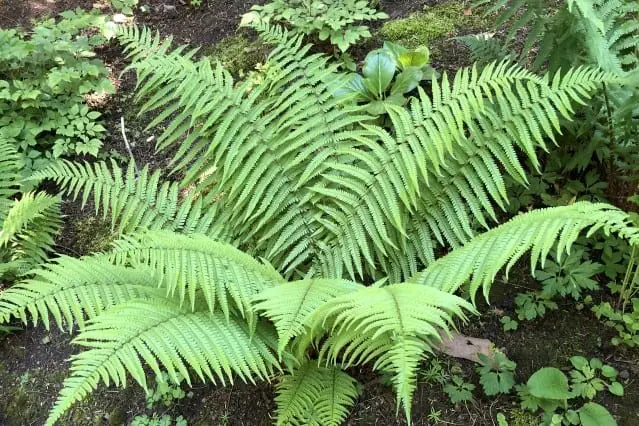
King fern
- Dryopteris affinis
- Semi-evergreen
- Shade, partial or full sun
- Height: up to 1.5 m
- Soil: acid, neutral or alkaline. Moist, well-drained.
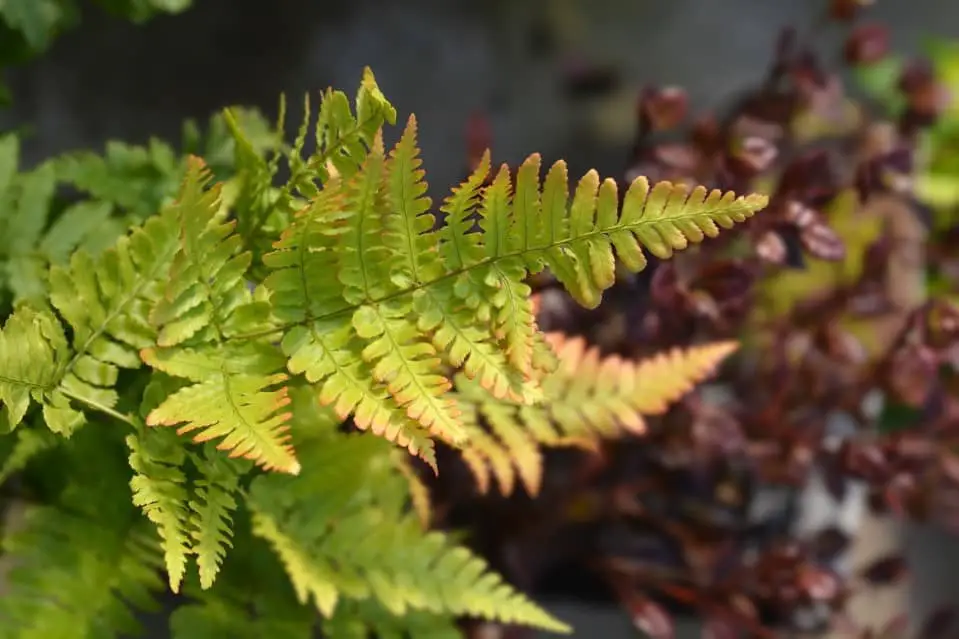
Autumn fern
- Dryopteris erythrosora
- Semi-evergreen
- Full or partial shade, and full sun
- Height: up to 1 m
- Soil: tolerant of most pH and drainage conditions.

Common bracken
- Pteridium aquilinum
- Deciduous
- Prefers partial shade or full sun
- Height: up to 1 m
- Soil: acid, neutral or alkaline. Moist, well-drained.
This last suggestion comes with the health warning that Bracken is both highly invasive and potentially poisonous. It is rarely suitable for suburban gardens, but could be manageable in a larger plot.
Ferns that can tolerate sun
Although not best suited to the full sun of midday, there are many varieties of fern that can thrive in spaces that get direct sunlight in the morning or afternoon, or broken sun throughout the day. Here are some suggestions:
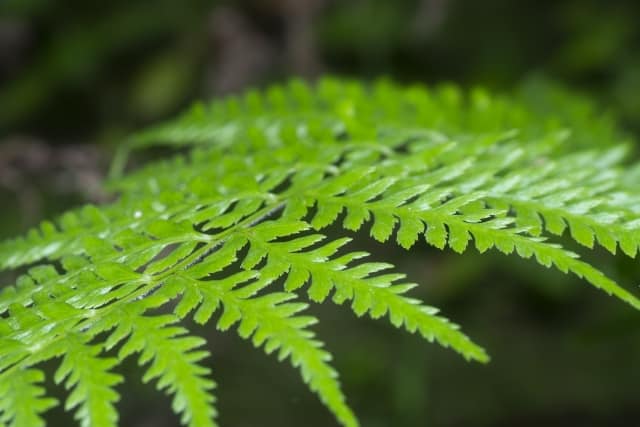
Lady fern
- Athyrium filix-femina
- Deciduous
- Prefers partial or full shade
- Height: up to 1 m
- Soil: acid or neutral. Moist, poor drainage tolerated.

Ostrich fern
- Matteuccia struthiopteris
- Deciduous
- Full or partial shade
- Height: up to 1.5 m
- Soil: acid or neutral. Moist, well-drained.
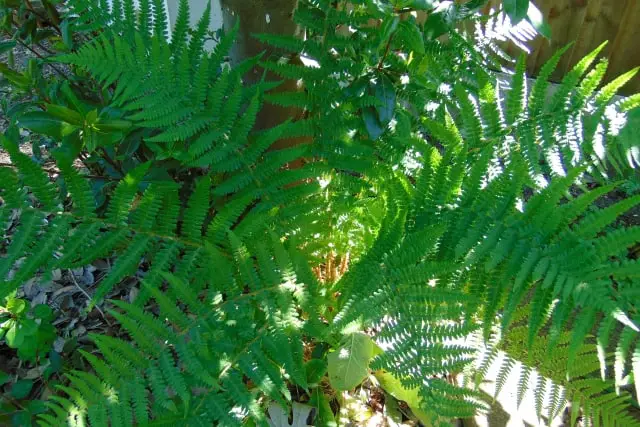
Male fern
- Dryopteris filix-mas
- Deciduous
- Prefers partial or full shade
- Height: up to 1.5 m
- Soil: acid, neutral or alkaline. Moist, poor drainage tolerated.

Cinnamon fern
- Osmunda cinnamomea
- Deciduous
- Prefers partial shade
- Height: up to 1.5 m
- Soil: acid. Moist, poor drainage tolerated.

Southern wood fern
- Dryopteris ludoviciana
- Semi-evergreen
- Prefers full or partial shade
- Height: up to 1.5 m
- Soil: acid, neutral or alkaline. Moist, tolerates poor drainage.
Ferns that should be kept in the shade
Although many ferns can surprise us with their tolerance for sun, some are too sensitive and really only thrive when light levels are lower. Here are some popular varieties of fern that really should not be planted in full sun:
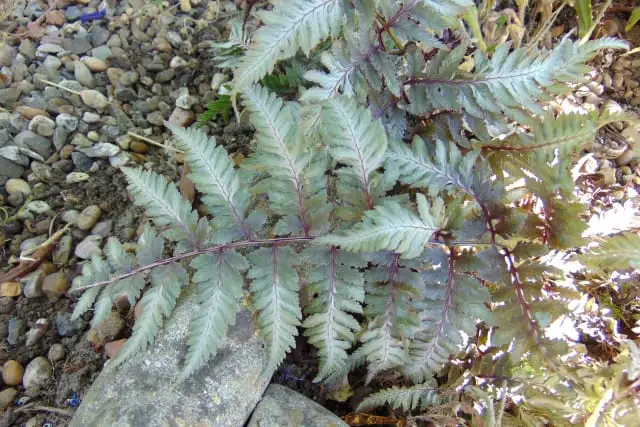
Japanese painted fern
- Athyrium niponicum
- Deciduous
- Prefers partial shade
- Height: up to 0.5 m
- Soil: acid, neutral or alkaline. Moist, well-drained.
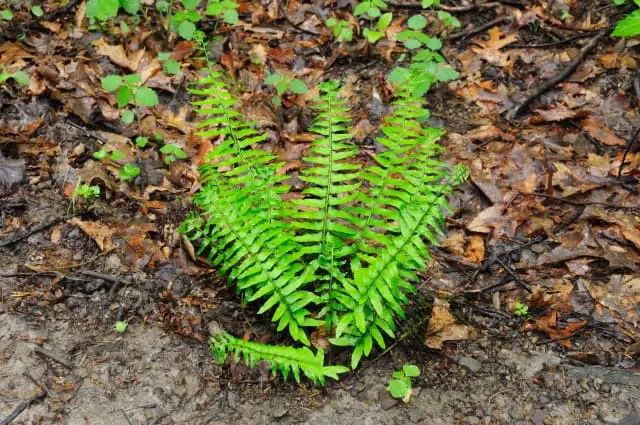
Christmas fern
- Polystichum acrostichoides
- Evergreen
- Partial shade
- Height: up to 1 m
- Soil: acid, neutral or alkaline. Moist, well-drained.

Boston fern
- Nephrolepis exaltata
- Evergreen
- Partial shade
- Height: up to 1 m
- Soil: acid or neutral. Moist, well-drained.
How much sun can ferns tolerate?
Identifying a good species of fern for sunny spots is one thing, but you also need to consider how intense the sun is in your location. High summer in Texas or Arizona is going to mean very different conditions to Minnesota or Alaska. Similarly, the summer sun of Spain and Portugal makes greater demands than that of Britain and northern Europe.
If you live in a region with very intense sun, you should be more careful to choose the most sun-loving ferns, or take steps to partially shade them during the hottest periods of the year. If you are in a more northerly or southerly latitude, you’ll have more flexibility about the range of species you can plant.
A good general principle is to pick native species, as these will automatically be well adapted to your local climate. There are also some cultivars that cross more ornamental species with tougher native plants. One example is the brilliantly named Athyrium ‘Godzilla’, which is a painted fern that was adapted to high temperatures by crossing a Japanese painted fern with the native Texas Lady fern.
For this sort of regional detail, your local nursery or specialist garden center should be able to provide you with the best advice.
For indoor ferns, the answer is simpler: you can moderate the sun by positioning ferns strategically. For sensitive ferns like the Boston fern, avoid positioning them on sunny windowsills, and move them further into the room or closer to north-facing windows.
How to tell if your fern has been damaged by the sun
We don’t usually think of things this way, but plants can suffer sunburn too. The first sign that your fern has had more sun than it can manage is a bleached or faded appearance to the fronds. This can look like a sickly pale green colour, as compared to the usual lush greens that add so much pleasant colour to the garden. This bleached out effect is usually accompanied by a failure to grow – as though the fern has been arrested in its development.
More severe sunburn is characterised by brown and shrivelled fronds. This happens to the fronds most directly exposed to the sun, and is distinct from the usual dying back and browning off of the older (generally lower) fronds of deciduous varieties. It is possible that a good watering may be enough to revive the fern and allow for new vigorous growth to return, but if fronds continue to brown and shrivel even after you have ruled out the impact of drought, you will need to either move the plant or provide some additional shade.
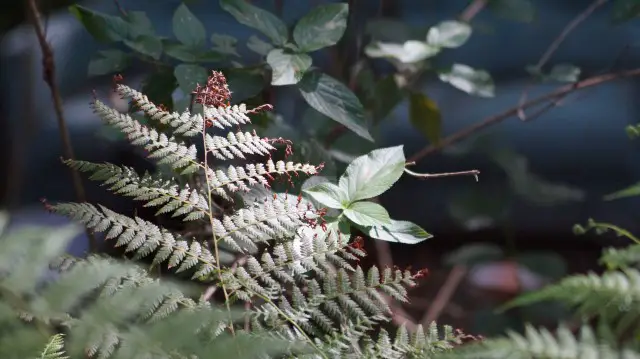
Ferns tend to be most vulnerable to sun damage when they are young, or not yet established in a new planting position. As they mature, resilience tends to increase. Finally, don’t underestimate the impact of pruning and weeding of nearby beds on the light levels that your fern is exposed to. We once nearly lost a beautiful japanese painted fern after pruning back a climbing jasmine that had been casting broken shade over the bed below – not realising how important that (overabundant!) growth had been for the fern’s wellbeing.
How to care for ferns in sunny spots
Once you have chosen the perfect fern for a sunny corner of the garden or south-facing windowsill, you should also plan for how to help them thrive. Most importantly, even if a fern is happy in sun, it may not be drought-tolerant too. Some species are, but most prefer moist, well drained soil to thrive.
If you experience a prolonged dry period, regular watering of ferns is advised to protect them against the worst droughts. A good, rich mulch is another important tactic – protecting the rhizomes and roots against direct sun and trapping moisture in the soil by reducing evaporation.
If you have the option, positioning ferns near water can also be beneficial, especially if the spot is also sheltered from wind. The increased humidity will be appreciated, and most ferns will respond beautifully under such optimal conditions.
For indoor ferns, watering can be more easily controlled. The simplest way to judge whether your fern is too dry is to lift the pot or basket it is planted in, and gauge from the weight how moist the soil is. If your fern needs watering, it is often best to do in stages, giving small doses of water and letting it soak in before topping up with another short drink.
Low humidity can also be a concern for indoor ferns, as most of us like to live in well controlled environments, rather than damp grottos. A clever trick for this is to place an indoor fern on a tray of pebbles (or top off the soil with them), which can then be wettened. This can provide sufficient local humidity to help the fern flourish. Another possibility is to position the ferns near the more naturally humid parts of the house – bathrooms or kitchens.
Finally, some fern lovers swear by “misting” their ferns from time to time with a nebulizer or spray. Whilst this high degree of care is no doubt much appreciated by the pampered fern, it is rarely necessary for healthy, successful growth.
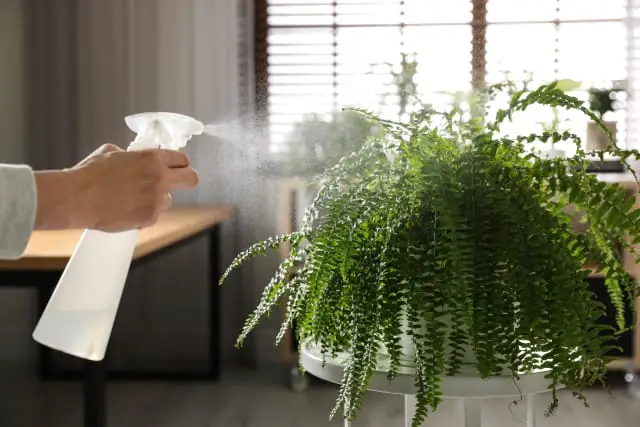
Many ferns can thrive in sunlight, and careful selection of the variety to complement your local climate is the key to getting good results. As ever, consulting the expertise of your local nursery or garden centre can help you source the perfect match to your needs.
